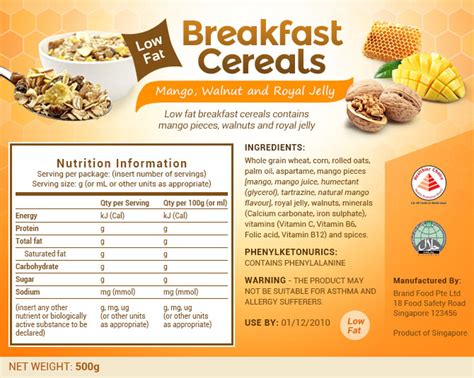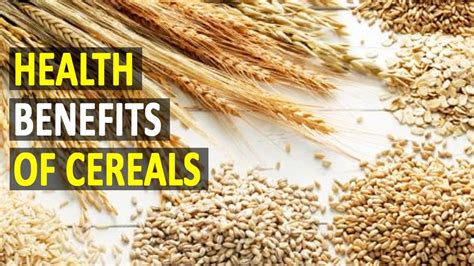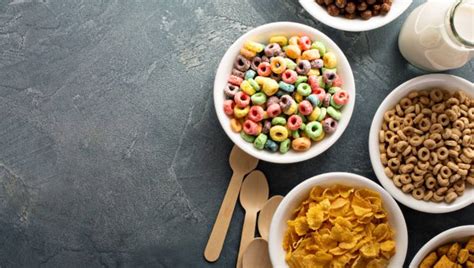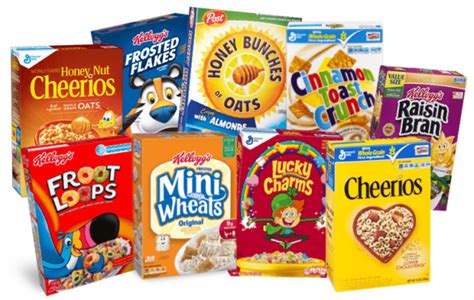Intro
Discover the best cereal for healthy eating, featuring whole grain, high-fiber, and low-sugar options, perfect for a nutritious breakfast or snack, promoting weight management and overall well-being.
The importance of starting your day off right with a nutritious breakfast cannot be overstated. Among the various breakfast options available, cereal is a popular choice due to its convenience and variety. However, not all cereals are created equal, and some are significantly healthier than others. With the multitude of options lining the grocery store shelves, selecting the best cereal for healthy eating can be a daunting task. It's essential to consider the nutritional content, ingredients, and potential health benefits when making your choice. By doing so, you can ensure that your breakfast cereal contributes positively to your overall diet and well-being.
Eating a healthy breakfast has been linked to numerous benefits, including improved concentration and productivity, better weight management, and a reduced risk of chronic diseases such as heart disease and diabetes. Cereal can be a part of a healthy breakfast when chosen wisely. Look for cereals that are high in fiber, protein, and whole grains, and low in added sugars, sodium, and unhealthy fats. These nutrients can help keep you full, provide sustained energy, and support digestive health. Furthermore, incorporating a variety of whole grains into your diet can help ensure you're getting a broad range of essential vitamins and minerals.
The market for breakfast cereals is vast and diverse, offering a wide range of products that cater to different tastes, dietary needs, and health goals. From traditional cornflakes and wheat cereals to more specialized options like gluten-free, vegan, or high-protein cereals, there's something for everyone. However, the nutritional quality of these cereals can vary significantly. Some cereals are highly processed and contain large amounts of added sugars, artificial flavorings, and preservatives, which can negate any potential health benefits. On the other hand, cereals made from whole grains and minimal ingredients can provide a nutritious start to the day. Understanding the differences and making informed choices is crucial for those seeking to incorporate healthy cereal options into their diet.
Understanding Cereal Nutrition Labels

To navigate the cereal aisle effectively, it's vital to understand how to read and interpret nutrition labels. The nutrition label provides detailed information about the cereal's nutritional content, including serving size, calories, macronutrients (carbohydrates, protein, and fat), and micronutrients (vitamins and minerals). Pay particular attention to the ingredient list, where ingredients are listed in order of their quantity in the product. Choose cereals with whole grains as the first ingredient and avoid those with a high amount of added sugars, which can be disguised under various names such as high fructose corn syrup, honey, or maple syrup.
Key Nutrients to Look For
When evaluating the nutritional quality of a cereal, several key nutrients should be considered:
- Fiber: Helps with digestion, satiety, and blood sugar control. Aim for cereals with at least 3 grams of fiber per serving.
- Protein: Important for muscle health and can help keep you full. Look for cereals with at least 5 grams of protein per serving.
- Whole Grains: Provide more nutrients and fiber compared to refined grains. Ensure whole grains are listed as the first ingredient.
- Sodium: Be mindful of cereals high in sodium, especially for those with high blood pressure or other heart health concerns.
- Added Sugars: Limit cereals with high amounts of added sugars. The American Heart Association recommends no more than 25 grams (6 teaspoons) of added sugars per day for women and 36 grams (9 teaspoons) for men.
Benefits of Healthy Cereals

Incorporating healthy cereals into your diet can have several benefits, including:
- Improved Digestive Health: High-fiber cereals can help regulate bowel movements and prevent constipation.
- Weight Management: Cereals high in fiber and protein can help keep you full, potentially leading to weight loss or maintenance.
- Reduced Risk of Chronic Diseases: Whole grains and fiber can help lower cholesterol levels and reduce the risk of heart disease, type 2 diabetes, and certain cancers.
- Increased Energy: Whole grain cereals provide sustained energy due to their complex carbohydrates and fiber content.
Popular Healthy Cereal Options
Several cereals stand out for their nutritional value and can be considered healthy options:
- Oatmeal: High in fiber, oatmeal can help lower cholesterol and provide sustained energy.
- Kashi GoLean: Offers a good balance of fiber and protein to keep you full and support digestive health.
- Post Shredded Wheat: Made from 100% whole wheat, it's a good source of fiber and has no added sugars.
- Kellogg's All-Bran: High in fiber and bran, which can help with digestive health and satiety.
Choosing the Right Cereal for Your Needs

The best cereal for you depends on your dietary needs, preferences, and health goals. Consider the following:
- Gluten-Free: If you have celiac disease or gluten sensitivity, look for cereals specifically labeled as gluten-free.
- Vegan: Choose cereals that are free from animal products, including honey and gelatin.
- High-Protein: For those looking to increase their protein intake, cereals with nuts, seeds, or protein isolates can be beneficial.
- Low Sugar: Opt for cereals with less than 8 grams of sugar per serving to minimize added sugar intake.
Tips for a Balanced Breakfast
To make the most of your cereal, follow these tips:
- Add Fresh Fruits: Incorporate fruits like berries, bananas, or sliced apples to increase the nutrient and fiber content of your breakfast.
- Use Low-Fat Milk or Alternatives: Pair your cereal with low-fat milk, almond milk, or other plant-based milk alternatives to reduce saturated fat and calorie intake.
- Incorporate Nuts or Seeds: Adding nuts or seeds like almonds, walnuts, chia seeds, or flaxseeds can boost the protein, healthy fat, and fiber content of your breakfast.
Common Mistakes When Choosing a Cereal

Several common mistakes can lead to choosing a less healthy cereal option:
- Not Checking the Ingredient List: Failing to review the ingredients can lead to consuming unwanted additives, preservatives, or high amounts of sugar.
- Relying on Front-of-Package Labels: While labels like "whole grain" or "high in fiber" are helpful, they should be verified by checking the nutrition label and ingredient list.
- Ignoring Serving Sizes: Be aware of the serving size to accurately assess the nutritional content of your cereal.
Future of Healthy Cereals
The market for healthy cereals is evolving, with trends towards more sustainable, organic, and functional ingredients. Consumers are increasingly looking for cereals that not only taste good but also provide specific health benefits, such as probiotics for gut health or ancient grains for nutritional diversity. As the demand for healthier options grows, manufacturers are responding by reformulating existing products and introducing new lines that cater to these preferences.
Conclusion and Next Steps

In conclusion, selecting the best cereal for healthy eating requires a thoughtful approach, considering factors such as nutritional content, ingredient quality, and personal dietary needs. By making informed choices and incorporating healthy cereals into your breakfast routine, you can set yourself up for a day of improved energy, better digestion, and a reduced risk of chronic diseases. Remember, a healthy breakfast is just the first step towards a balanced diet and a healthier lifestyle.
As you continue on your journey to healthier eating, consider exploring other nutrient-dense breakfast options and staying updated on the latest in nutrition science. Share your favorite healthy cereal options and breakfast recipes with friends and family to inspire others to make healthier choices. Together, we can cultivate a community that values and prioritizes health and wellness.
What makes a cereal considered "healthy"?
+A healthy cereal is typically high in whole grains, fiber, and protein, and low in added sugars, sodium, and unhealthy fats. It should also be made with minimal ingredients and few or no artificial preservatives or flavorings.
How can I ensure I'm getting enough fiber from my cereal?
+Choose cereals with at least 3 grams of fiber per serving and consider adding fruits, nuts, or seeds to increase the fiber content of your breakfast.
Are all whole grain cereals created equal?
+No, while whole grain cereals are generally a healthier option, the nutritional content can vary significantly between products. Always check the nutrition label and ingredient list to ensure your choice aligns with your dietary goals.
